At the very beginning of planning and research into our film, we created a blog for everything to be uploaded onto. In the beginning of planning our film, we uploaded a script, storyboard, and a shot list that would help us to film with more ease and reliability. We used digital technology, (Photoshop), to create our logo, which was then put onto our blog’s page, to alter the appearance of it.
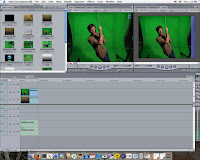 We used digital technology for our audience research. We made a video questionnaire by using a high-definition camera, then uploaded the footage onto an Apple Mac computer, and edited it together using final cut express. >>>>
We used digital technology for our audience research. We made a video questionnaire by using a high-definition camera, then uploaded the footage onto an Apple Mac computer, and edited it together using final cut express. >>>>We also added titles in (as it was a questionnaire), and then uploaded the finished video onto YouTube, and then onto our blog. This enabled us to develop our film creatively as we foun
 d out if people would like to see our film, (and more questions related to this). We had these opinions in mind when in the process of making our film. We also repeated this process when getting our audience feedback and evaluation at the end of making our film. This is a scree shot of our video questionnaire.
d out if people would like to see our film, (and more questions related to this). We had these opinions in mind when in the process of making our film. We also repeated this process when getting our audience feedback and evaluation at the end of making our film. This is a scree shot of our video questionnaire.We also relied heavily on the internet in the research and planning stages, for research on factors linked closely with the idea of our film. For example how celebrities react to the press, magazine interviews, and poster and radio trailer research. http://whathappensinvegas10.blogspot.com/2011/02/magazine-interview-examples.html - This is a link to a post on our blog, which is about research into magazine articles, with links to YouTube.
We used YouTube to find some of our research, as we could get real-life videos, and this was very useful as we could talk about them and see how they are done, in order for us to incorporate some of these ideas into out film.
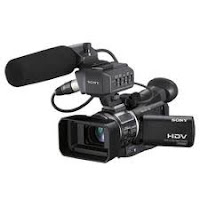
In the making of our film, we used a HDV camera and tripod for recording, and final cut express to edit it all together. We added effects into our film (using final cut express) and these we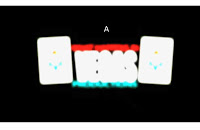 re fades, flashes and still-shots. This is a flash effect we used in our titles.
re fades, flashes and still-shots. This is a flash effect we used in our titles.
 re fades, flashes and still-shots. This is a flash effect we used in our titles.
re fades, flashes and still-shots. This is a flash effect we used in our titles. To get music for our film, we used the website Jamendo (http://www.jamendo.com/en/), as it is free to download all music and the songs do not have copyright on them. We also added some sound effects in, such as an ambulance siren and the sound of a gun shot. These enabled us to develop our film creatively as they sounded very realistic and added drama. This is where we got out gun shot sound effect from: http://soundbible.com/1789-Loud-Bang.html. We used Photoshop to create our poster, which was the best software to use as it designed for this job. With Photo
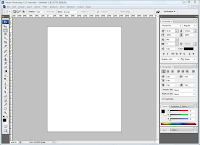 shop, there were many different ways of producing our poster, and it enabled us to add different effects, which enhanced our final design. This is the photoshop software we used.
shop, there were many different ways of producing our poster, and it enabled us to add different effects, which enhanced our final design. This is the photoshop software we used.We also used ‘Garage band’ to make our radio trailer, which enabled us to 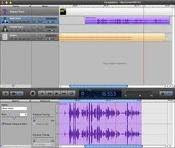 produce a good quality radio trailer. We had never used this software before and we found that it was very useful for this task and it helped us to develop our creativity. It allowed us to import sound and music from our actual film, and also to add in our own voiceovers (which we recorded using a zoom recorder). ‘Garage band’ was useful also as we could increase or decrease the sound on the trailer to get the feel of “The Last Line’s” radio trailer just right.
produce a good quality radio trailer. We had never used this software before and we found that it was very useful for this task and it helped us to develop our creativity. It allowed us to import sound and music from our actual film, and also to add in our own voiceovers (which we recorded using a zoom recorder). ‘Garage band’ was useful also as we could increase or decrease the sound on the trailer to get the feel of “The Last Line’s” radio trailer just right.
 produce a good quality radio trailer. We had never used this software before and we found that it was very useful for this task and it helped us to develop our creativity. It allowed us to import sound and music from our actual film, and also to add in our own voiceovers (which we recorded using a zoom recorder). ‘Garage band’ was useful also as we could increase or decrease the sound on the trailer to get the feel of “The Last Line’s” radio trailer just right.
produce a good quality radio trailer. We had never used this software before and we found that it was very useful for this task and it helped us to develop our creativity. It allowed us to import sound and music from our actual film, and also to add in our own voiceovers (which we recorded using a zoom recorder). ‘Garage band’ was useful also as we could increase or decrease the sound on the trailer to get the feel of “The Last Line’s” radio trailer just right. Our interview scene was shot in quite a large studio, and so when we uploaded the sound onto final cut express ready to edit, we noticed that the sound was far too quiet. To resolve this, we increased the volume on the software, and made sure it was at the same level for every shot. By using this, digital technology helped us to develop our film as the interview scenes 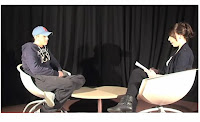 were now of a better quality. We also re-framed some of the shots in the magazine interview so the shots were a better quality. For example this shot:
were now of a better quality. We also re-framed some of the shots in the magazine interview so the shots were a better quality. For example this shot:
 were now of a better quality. We also re-framed some of the shots in the magazine interview so the shots were a better quality. For example this shot:
were now of a better quality. We also re-framed some of the shots in the magazine interview so the shots were a better quality. For example this shot:When we filmed the press scenes, it was really windy and when we were editing it, we found that the quality was poor as we couldn’t hear what the  press were shouting. We would have liked to decrease the sound of the wind, however then the whole sound would have decreased; so instead to solve this, we decided to add a voiceover of the main character, Connor, talking, using a zoom recorder. This was a good idea as it hid the fact that the sound was not good quality, and the audience got more of an insight and understanding into the film.
press were shouting. We would have liked to decrease the sound of the wind, however then the whole sound would have decreased; so instead to solve this, we decided to add a voiceover of the main character, Connor, talking, using a zoom recorder. This was a good idea as it hid the fact that the sound was not good quality, and the audience got more of an insight and understanding into the film.
 press were shouting. We would have liked to decrease the sound of the wind, however then the whole sound would have decreased; so instead to solve this, we decided to add a voiceover of the main character, Connor, talking, using a zoom recorder. This was a good idea as it hid the fact that the sound was not good quality, and the audience got more of an insight and understanding into the film.
press were shouting. We would have liked to decrease the sound of the wind, however then the whole sound would have decreased; so instead to solve this, we decided to add a voiceover of the main character, Connor, talking, using a zoom recorder. This was a good idea as it hid the fact that the sound was not good quality, and the audience got more of an insight and understanding into the film.
No comments:
Post a Comment